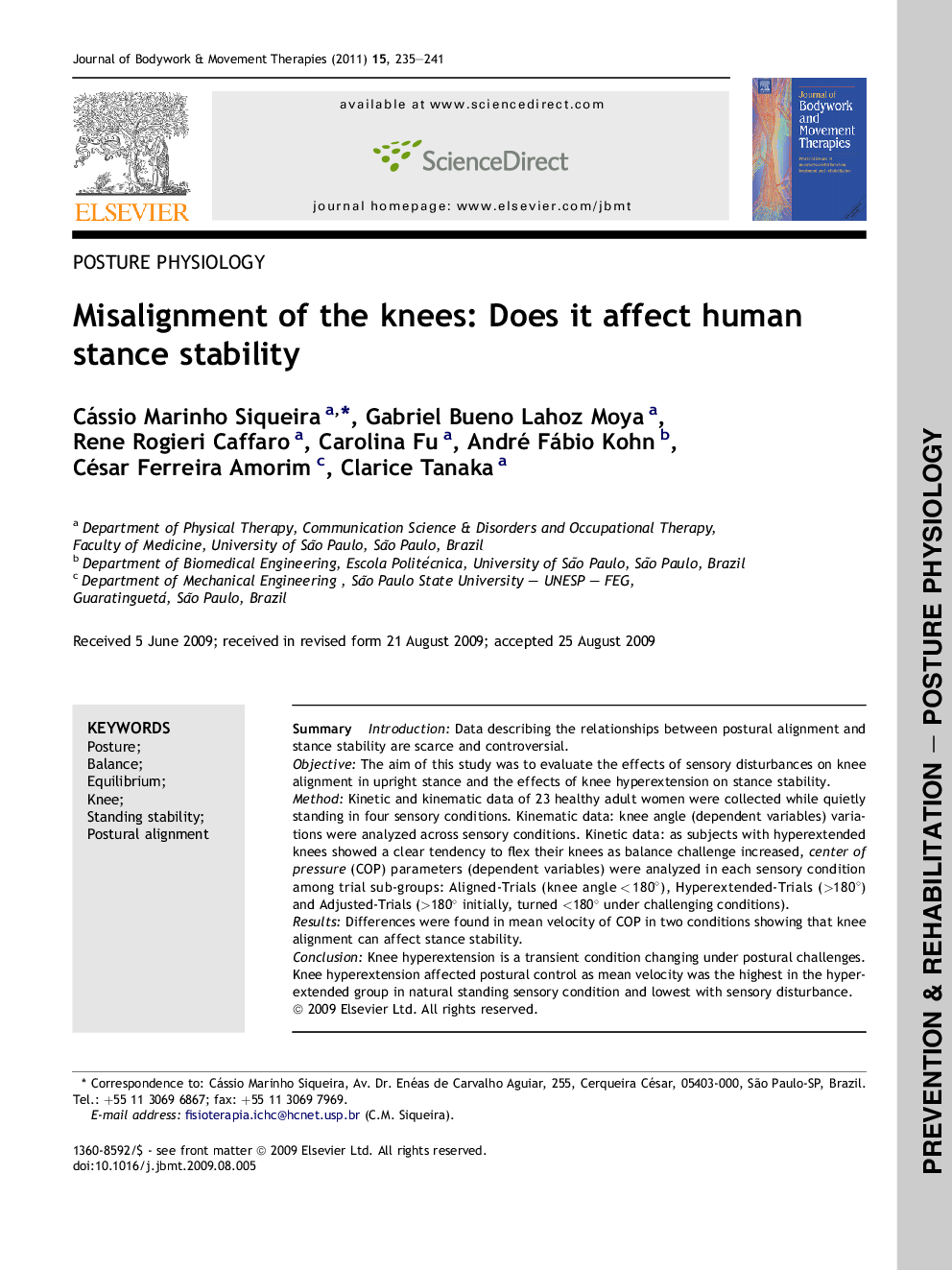| Article ID | Journal | Published Year | Pages | File Type |
|---|---|---|---|---|
| 2619798 | Journal of Bodywork and Movement Therapies | 2011 | 7 Pages |
SummaryIntroductionData describing the relationships between postural alignment and stance stability are scarce and controversial.ObjectiveThe aim of this study was to evaluate the effects of sensory disturbances on knee alignment in upright stance and the effects of knee hyperextension on stance stability.MethodKinetic and kinematic data of 23 healthy adult women were collected while quietly standing in four sensory conditions. Kinematic data: knee angle (dependent variables) variations were analyzed across sensory conditions. Kinetic data: as subjects with hyperextended knees showed a clear tendency to flex their knees as balance challenge increased, center of pressure (COP) parameters (dependent variables) were analyzed in each sensory condition among trial sub-groups: Aligned-Trials (knee angle < 180°), Hyperextended-Trials (>180°) and Adjusted-Trials (>180° initially, turned <180° under challenging conditions).ResultsDifferences were found in mean velocity of COP in two conditions showing that knee alignment can affect stance stability.ConclusionKnee hyperextension is a transient condition changing under postural challenges. Knee hyperextension affected postural control as mean velocity was the highest in the hyperextended group in natural standing sensory condition and lowest with sensory disturbance.
